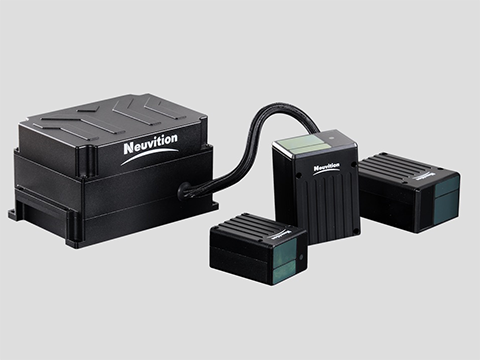Neuvition has unveiled the first version of its 480 lines HD video LiDAR, Titan M1. The semi solid state LiDAR has a resolution of 480 vertical lines and 1280 pixels max for each line (resolution of 1280 x 480). It is one of the highest resolution LiDARs on the commercial market. It has up to 1.5 million points/sec data rate with multiple returns and distance up to 200 meters. The Titan M1 uses a 1550nm wavelength laser which is eye safe and works better in certain weather conditions compared to the 905nm laser.
“With max 480 lines high resolution and 200 meters distance, Neuvition Titan M1 will make autonomous driving safer compared to lower resolution LiDARs and other solutions,” Henry Li, CEO of Neuvition, said. “High resolution LiDARs allow autonomous driving cars to see better from a longer distance. The device will make it much harder to miss small objects on the road, that will increase the safety level of self-driving cars,” Jian Lin, Chairman of Neuvition, said.

Another advantage of the Neuvition LiDAR is the dynamically adjustable system. It allows the LiDAR to be adjusted dynamically to use different resolution, power, scan density, distribution pattern, etc. “With the self-driving car and other LiDAR applications getting smarter, these applications will want to control the LiDAR more easily and more dynamically. We design the LiDAR like a smart phone which can be easily controlled with software or APIs. This will make it much easier to adapt for different applications and environments,” said by Jian Lin, Chairman.
One important feature of the Neuvition LiDAR is the video fusion. The Titan M1 comes with a video camera on board. It can generate the colorless point cloud, or the colored point cloud which is important for many applications. By combining distance data and color, we make it easy to generate the 3D color model with our LiDAR devices. Besides the autonomous driving, other applications such as 3D imaging or surveillance should benefit from the color point cloud and the point cloud fused video. “It will become one of the important sensors for AI,” Henry and Jian said.
For further information about 3D Printing, follow us on our social networks and subscribe to our newsletter
Would you like to subscribe to 3D Adept Mag? Would you like to be featured in the next issue of our digital magazine? Send us an email at contact@3dadept.com
//pagead2.googlesyndication.com/pagead/js/adsbygoogle.js
(adsbygoogle = window.adsbygoogle || []).push({});





